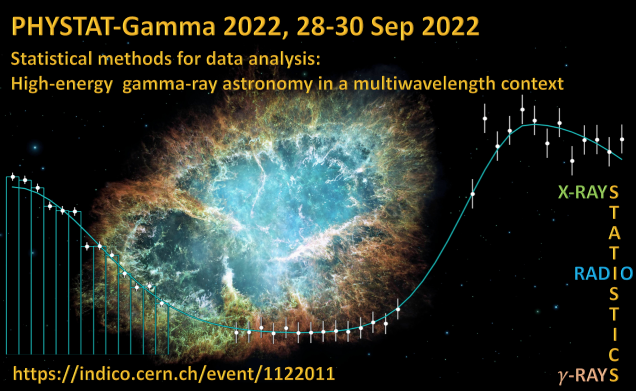PHYSTAT-Gamma 2022
Meeting ID: 622 3933 3803; Passcode: 496169
This link is for the pre-school on statistical methods (Tue, 27 Sep 2022) and PHYSTAT-Gamma (28-30 Sep 2022)

This compact workshop deals with statistical issues in the analyses of data from gamma-ray experiments, and is meant to establish tighter connections to observatories in other wavebands (e.g. x-rays, radio).
The workshop is complemented by an afternoon of introductory lectures on Tuesday, 27.9.22. Note that the ml.astro workshop on machine learning in astroparticle physics will take place on Monday, 26.9.22. This workshop is independent of PHYSTAT but will highlight complementary aspects.
The summary of the program for the week 26.9.22-30.9.22 is:
Mon, 26.9.22: ml.astro (Machine Learning in astroparticle physics)
Tue, 27.9.22: Introductory talks on Statistics and Machine learning
Wed-Fri (28.9.22.-30.9.22): PHYSTAT-gamma: Statistical Methods in gamma-ray astronomy
The homepage of PHYSTAT with a list of all workshops and seminars is at https://espace.cern.ch/phystat.